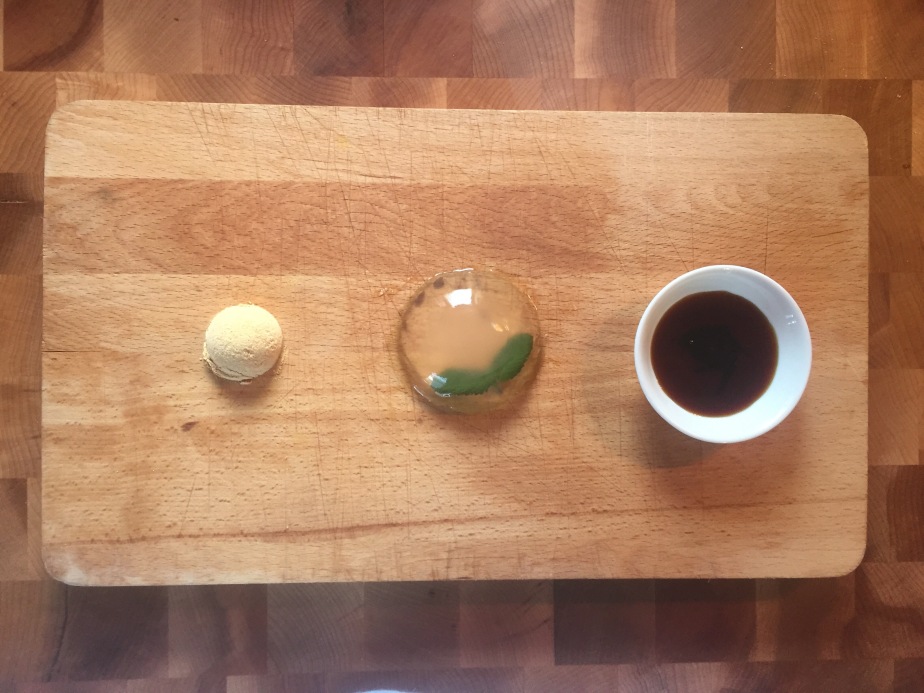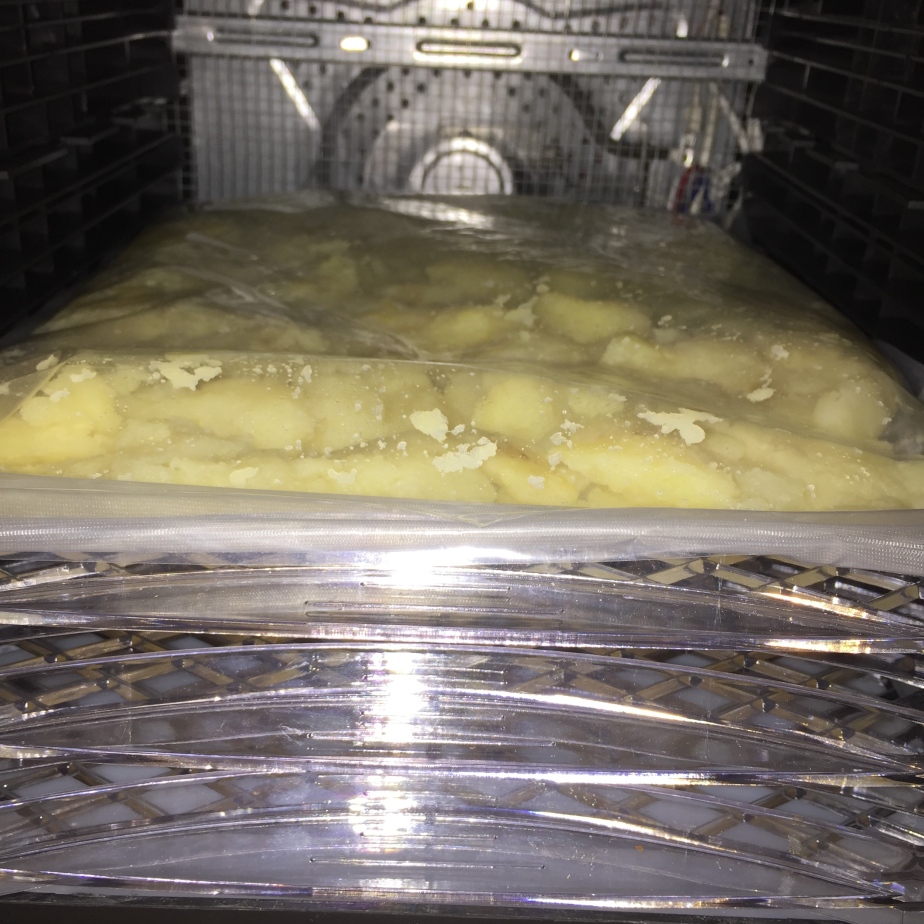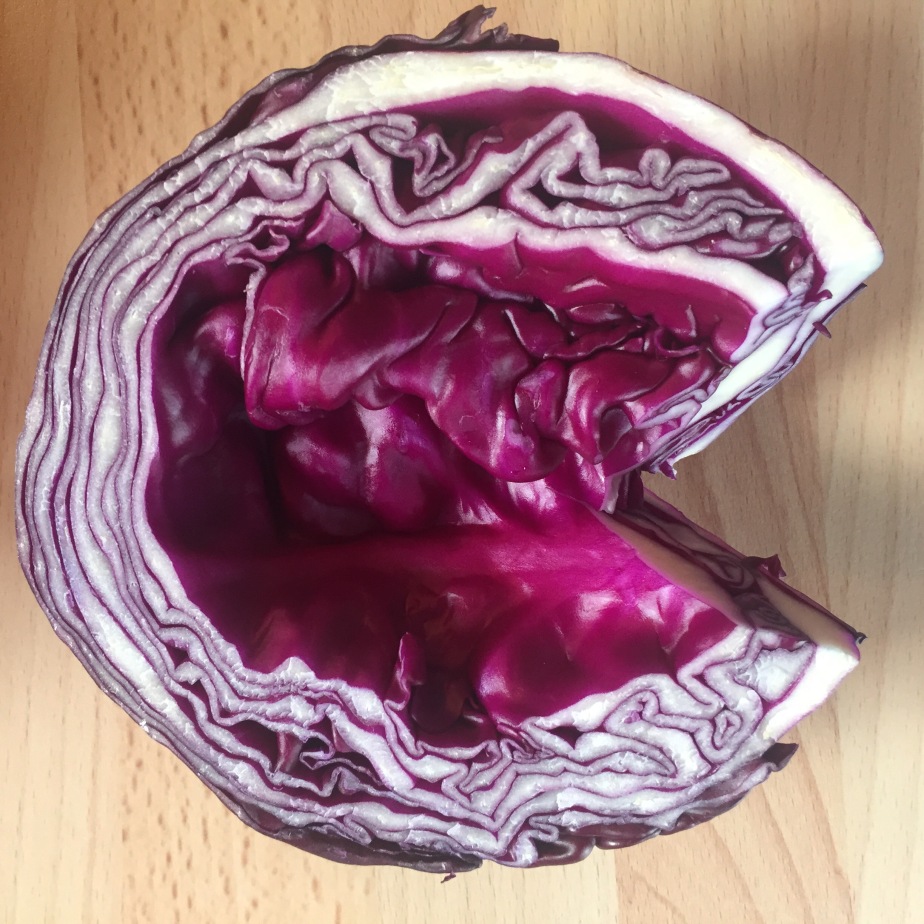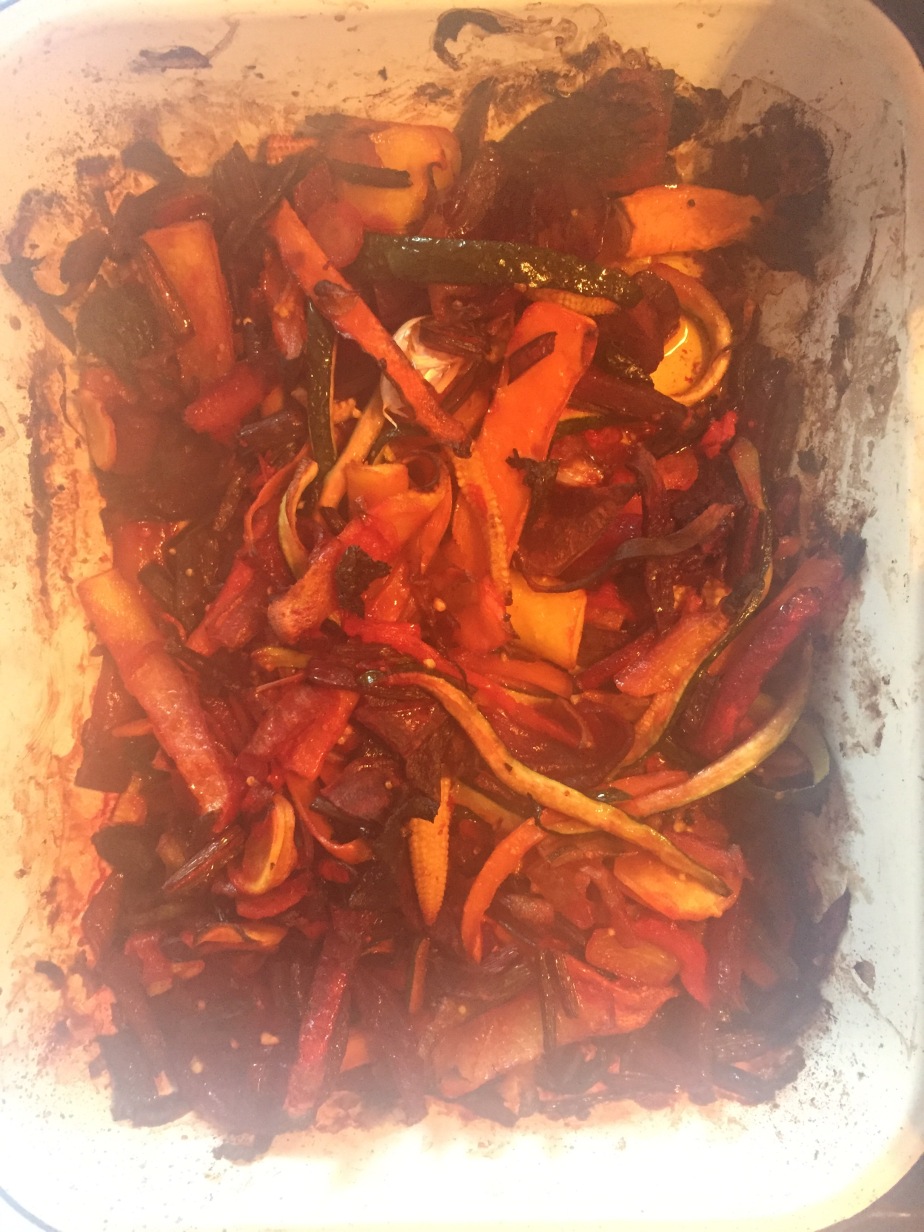I’ve tasted a couple of exceptional carrot recipes, one from Heston’s In Search of Perfection book, and one from Amass in Copenhagen. Both are amazing in their own right, but they use different techniques in preparation and cooking. So what would happen if we combined both, and chucked a couple of extra steps in just to complicate life a bit more.
Let’s start with Amass. This restaurant has got to be on your wish list if you’re ever in Denmark, simply stunning, and there’s no smoke and mirrors, the staff happily explain the technical steps and encourage you to try at home.
So, their carrots were first dehydrated, and then rehydrated in carrot juice, then roasted. Dehydrating and reducing the water content, then reconstitung it with carrot juice should intensify the flavour, and it really does. Does mean you use three times as many carrots and end up with… carrots, but does this make sense so far?
This reminds me of a time I tried to create spherical olives using a calcic bath and an alginate solution of olive juice. I spent a week on this and managed to create about 6 liquid ‘olives’. Told one of my colleagues the steps it took and they looked puzzled and simply said “but you already had an olive?”
Anyway. We’d all still be bashing coconuts on rocks if we didn’t experiment a bit, am I right?
Start by dehydrating 400g trimmed carrots (serves 4). Try and get the smallest, straightest ones you can, all of a similar size, as you’ll be pan frying them whole (eventually). Wash and gently scrub if needed, but no need to peel. Dehydrate at 45degrees celsius for ten hours, checking every few hours. They’ll look pretty shrivelled and like they’ve perhaps had one too many fortnights in Benidorm, but like the six million dollar man and Lego, we can rebuild them.
Use a juice extractor to juice 2kg of large carrots and [optional] add a few drops of pectinase to clarify the juice. Go a step further [also optional] and run it through a chemex or coffee filter to get it super clear. This clarifying and filtering isn’t essential, but the first time I tried this the carrots absorbed the carrot juice but left an unappetising slurry of fibres in the container which needed rinsing off the carrots.
Pour the carrot juice over the dehydrated carrots and leave in the fridge at least overnight and ideally for 24 hours, until they’re plump again.
Enter Heston, stage right. Even if you can’t be bothered with the above steps, use this recipe as a game changer for your Sunday roast. Let’s call it a thank you for reading this far. Well done you. The process is very simple, cook very gently in butter, in a covered pan. That’s it. There are a few more details and a good explanation of the science in the link below. The principal difference is that cooking in water removes most of the flavour (and vitamins) as they are lost to the water. So by using butter, the flavour compounds that are leached out during cooking are retained in the oil and absorbed back into the carrots as they slowly cook. Temperature must be low, the plan is to gently cook not fry them, so will take around 30 minutes. These will taste like the sweetest carrots you’ve had, guaranteed.
So, now our dehydrated-hydrated carrots are ready, put them in a large shallow pan in one layer (essential) with 100g of butter, cover and cook on a gentle heat for 30-45 minutes.

End result is sublime. Incredibly rich, complex depth of flavour, super sweet and other than a bit of time and wasting some carrot pulp, pretty cheap too. Worth combining all the steps? I think so, both recipes are exceptional and raise a simple side dish to be the star of the plate, and combining both takes it to another level. Give it a go!
Spherical Olives recipe (el bulli)





















